5 MIN READ
Mid-Season Hail-Damaged Corn
June 30, 2025
Mid- to late-season hail storms can be damaging to corn because:
- The growing point is above ground and can be damaged, impacting future growth and development.
- Leaf area can be greatly reduced through shredding and stripping, limiting photosynthesis.
- Stalks and ears can be bruised by hail stones.
- Wounds create entry points for disease, compromising plant health.
- The plant population can be reduced, leading to fewer plants to produce grain.
The effect on yield potential is dependent on the severity of each of these factors. After V6 growth stage (6 exposed leaf collars), the growing point is above ground and direct hits on the growing point, can damage or kill the growing point. Ear initiation begins in the growing point; therefore, direct hits by large hail stones can damage immature ears and ultimately result in lower yield potential.1 For additional information on early-season hail damage, please see Early Season Hail Damage
Yield Loss Estimation
Estimating the potential yield loss from mid- to late-season hail damage can be challenging. Evaluations should occur 7 to 10 days after the storm to allow for new growth and signs of recovery.1 Replanting severely damaged, mid-season corn is generally not an option because the remaining growing season is too short for a replanted crop to reach maturity. The USDA Federal Crop Insurance Corporation (FCIC) uses information based on the number of corn leaves with tips pointing toward the ground to determine growth stage. The traditional growth stage method counts leaves once the leaf collar is visible. The FCIC method of counting can result in the plants having two or more leaves than the leaf collar method if evaluations are necessary before tassels emerge.2 Plant defoliation results in the loss of photosynthetic leaf area. The severity of the loss depends on the amount of leaf area removed and the plant’s growth stage (Figure 1, 2, and 3). Shredded leaves can still photosynthesize; therefore, appearance can be misleading. Table 1 shows the estimated loss of yield potential for 20, 40, 60, 80, and 100% defoliation based on the FCIC leaf count method. Note that the estimated yield loss increases by leaf stage until tasseling and then begins to decline after tasseling.3 For information about corn growth stages, please see Determining Corn Growth Stages.
Stand counts can provide an estimate of the number of viable plants per acre. If the hail is severe (Figure 2 and 3), plant populations may be dramatically reduced. To estimate potential yield using stand and kernel counts, please see Assessing Corn Yield Potential for more information. Defoliation should be accounted for when taking stand counts to help provide a reasonable yield estimate.
Table 1. Estimated potential corn yield loss from plant defoliation. Corn growth stage based on ‘indicator leaf’ method where a leaf is considered fully developed when the leaf tip points to the ground (not a fully developed collar).
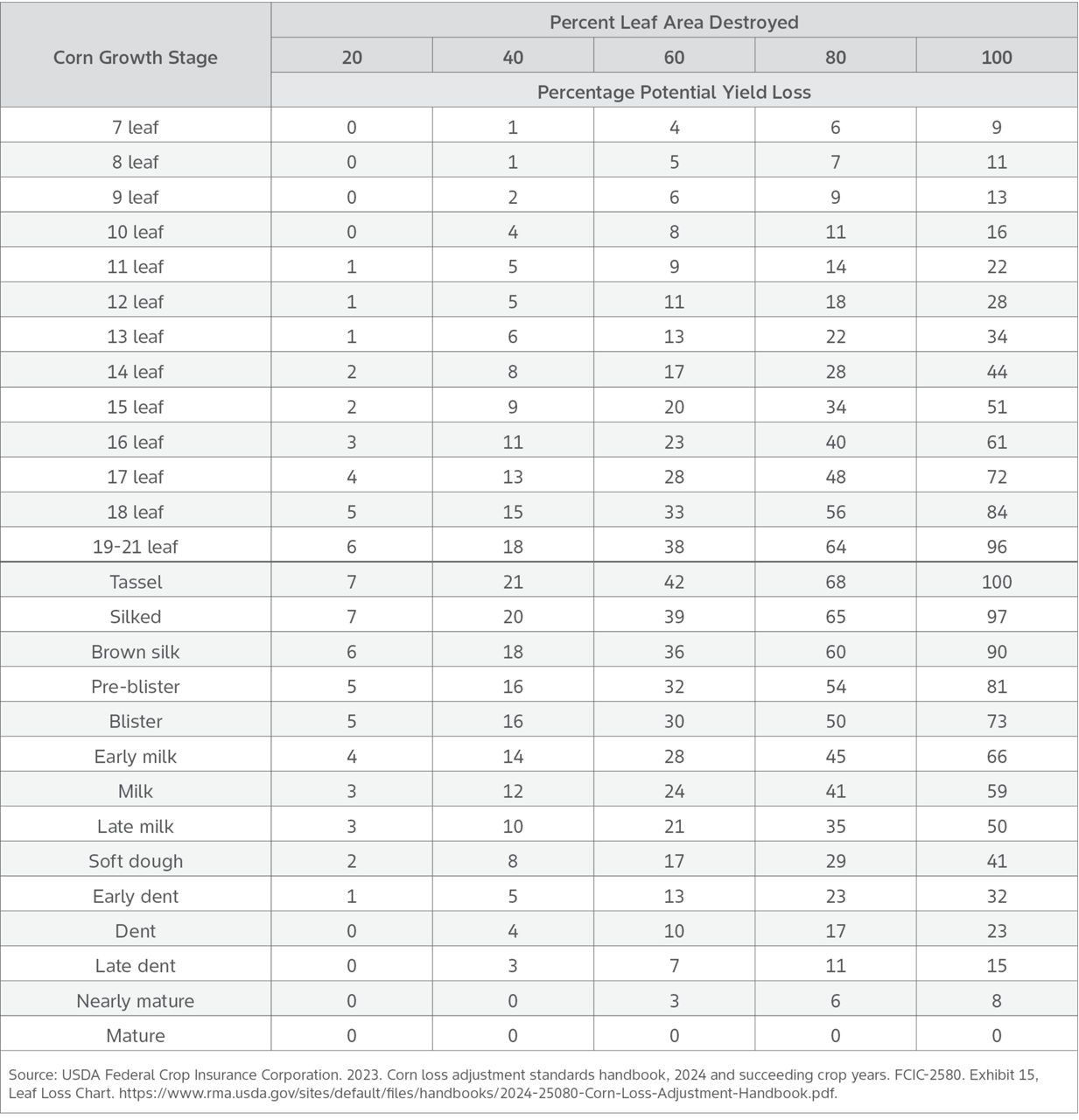
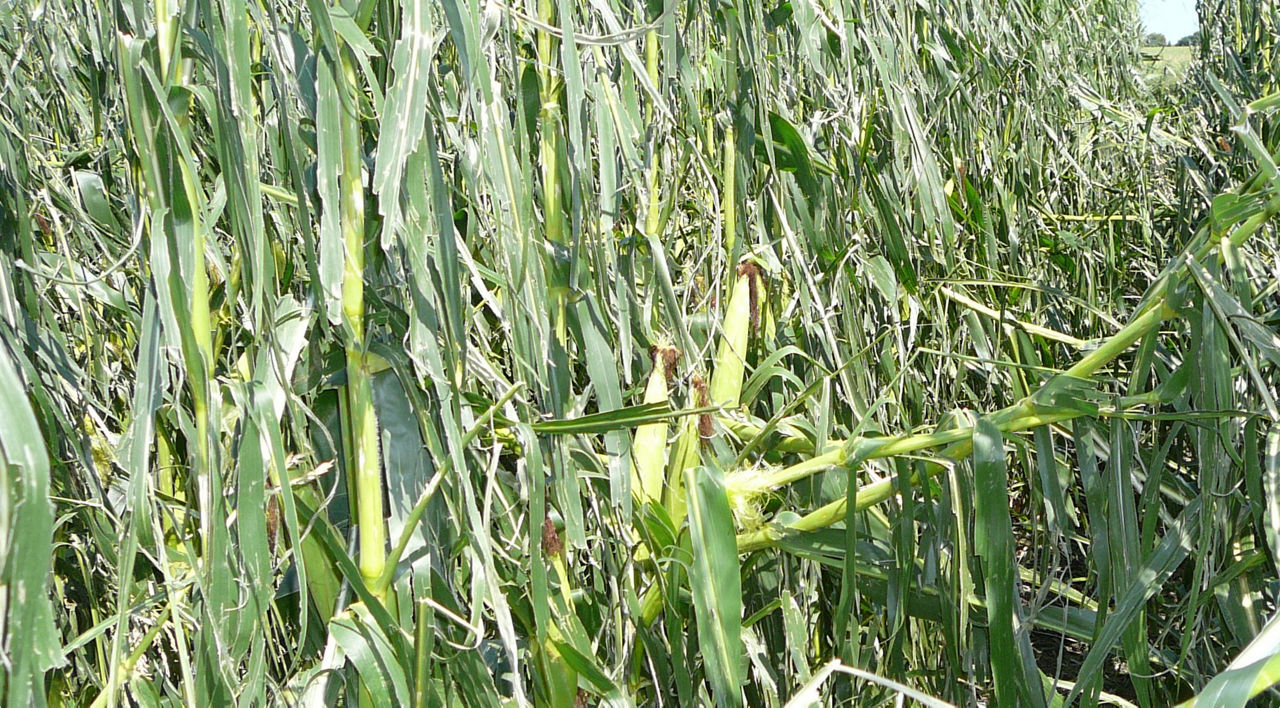
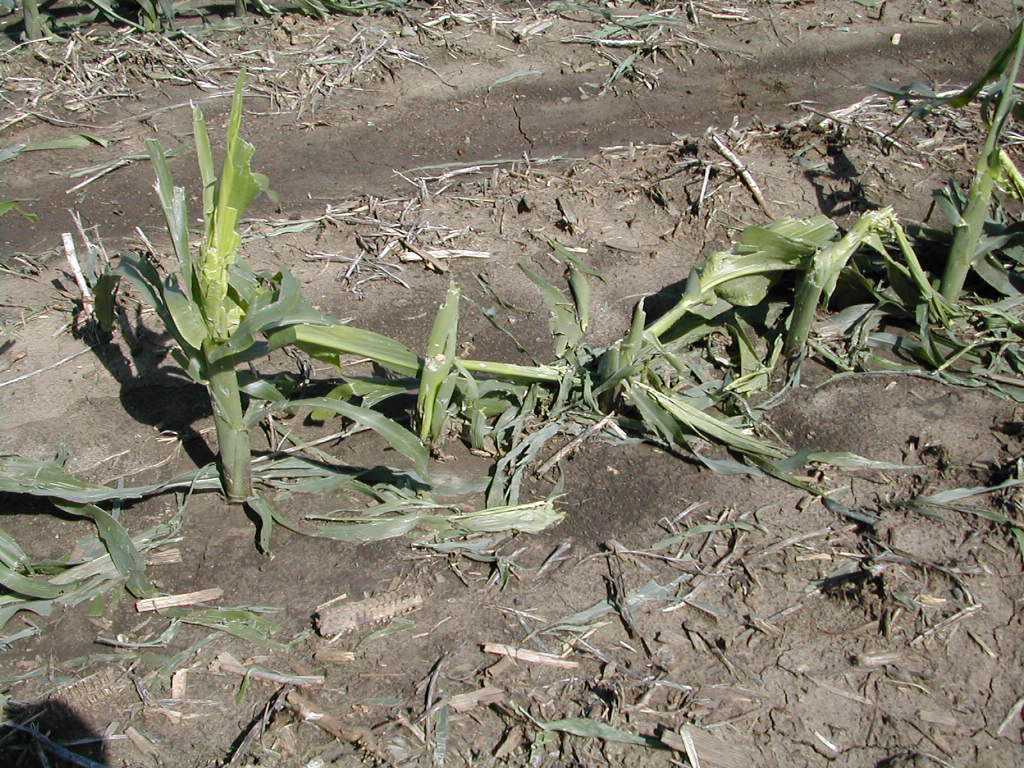
Stalk bruising can create an avenue for infection, which has the potential to cause stalk lodging later in the season (Figure 3 and 4). Continuous scouting should be conducted to evaluate stalk strength. Fields that appear to be losing stalk strength should be scheduled for an early harvest.4
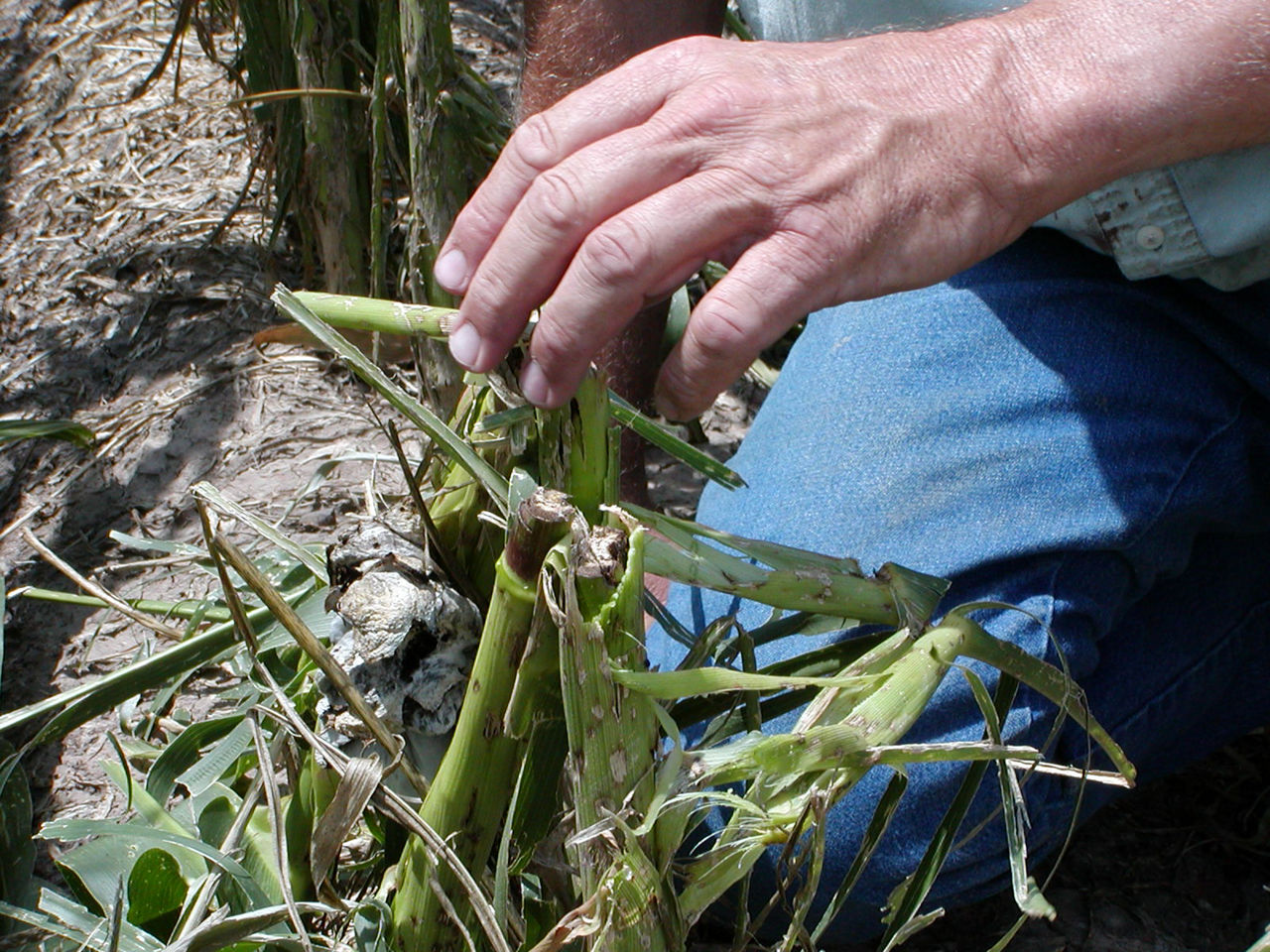
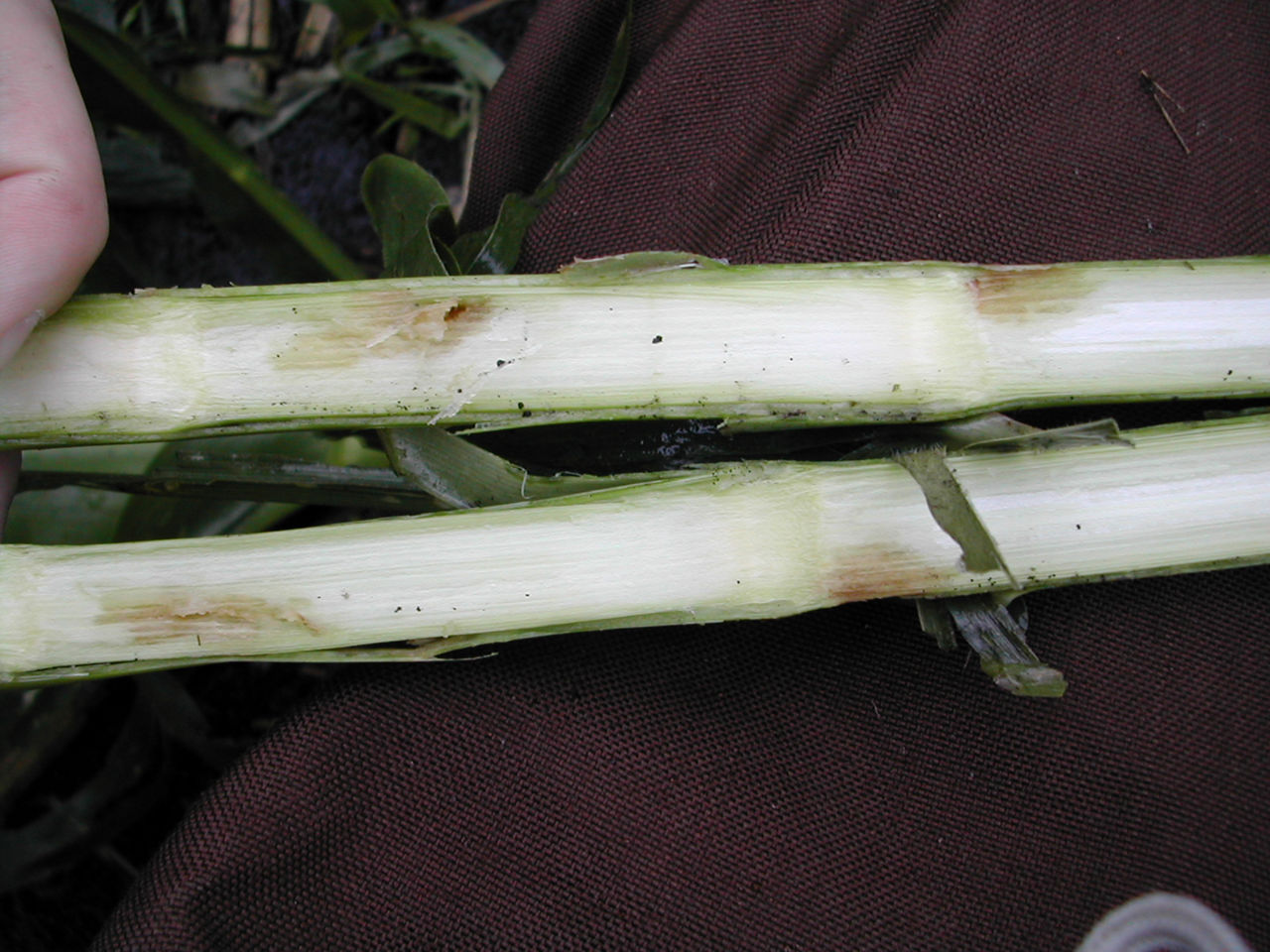
Direct hail hits on developing ears can cause milky kernels to break open and be destroyed (Figure 5, 6, and 7). Additionally, the sugars and starch exuding from the damaged kernels becomes a medium for fungal growth and insects to feed upon, which can result in damage to other kernels.
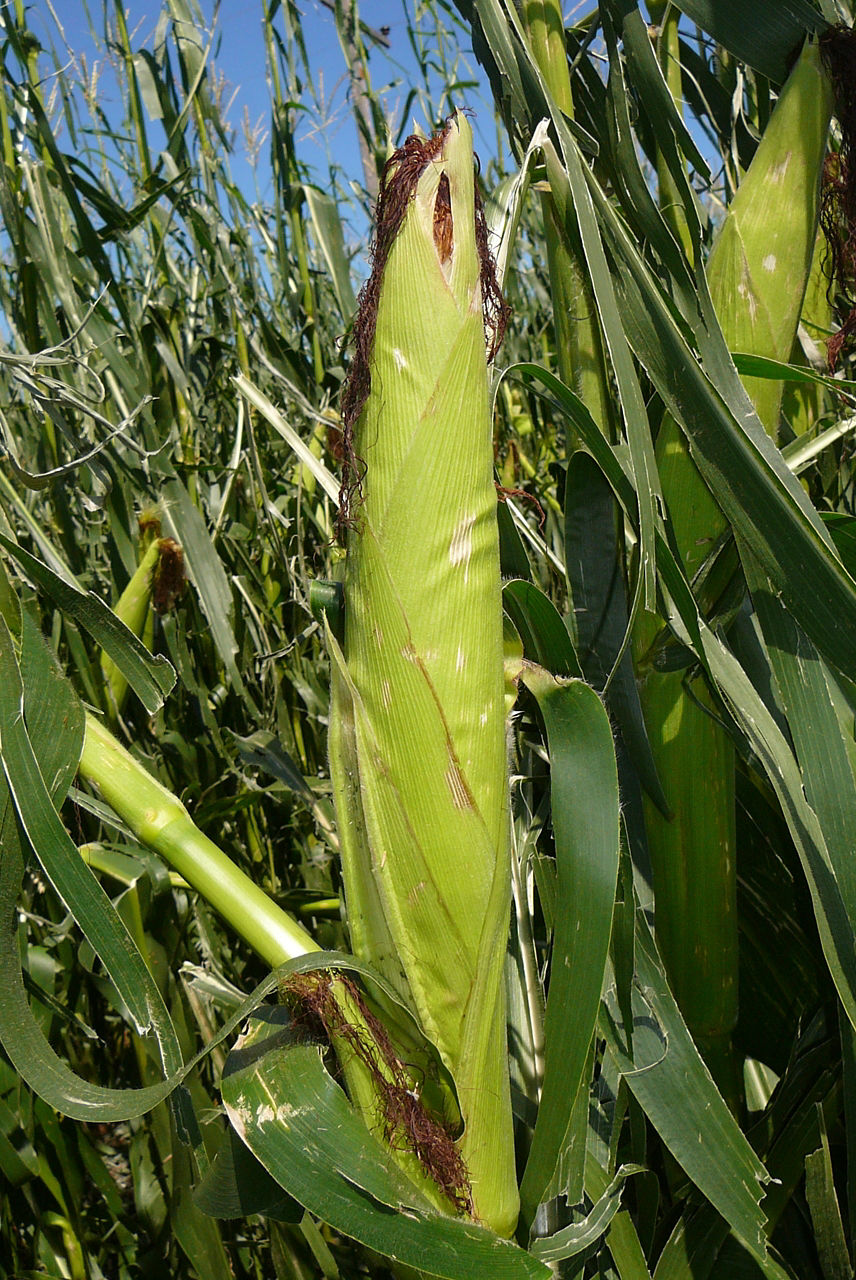
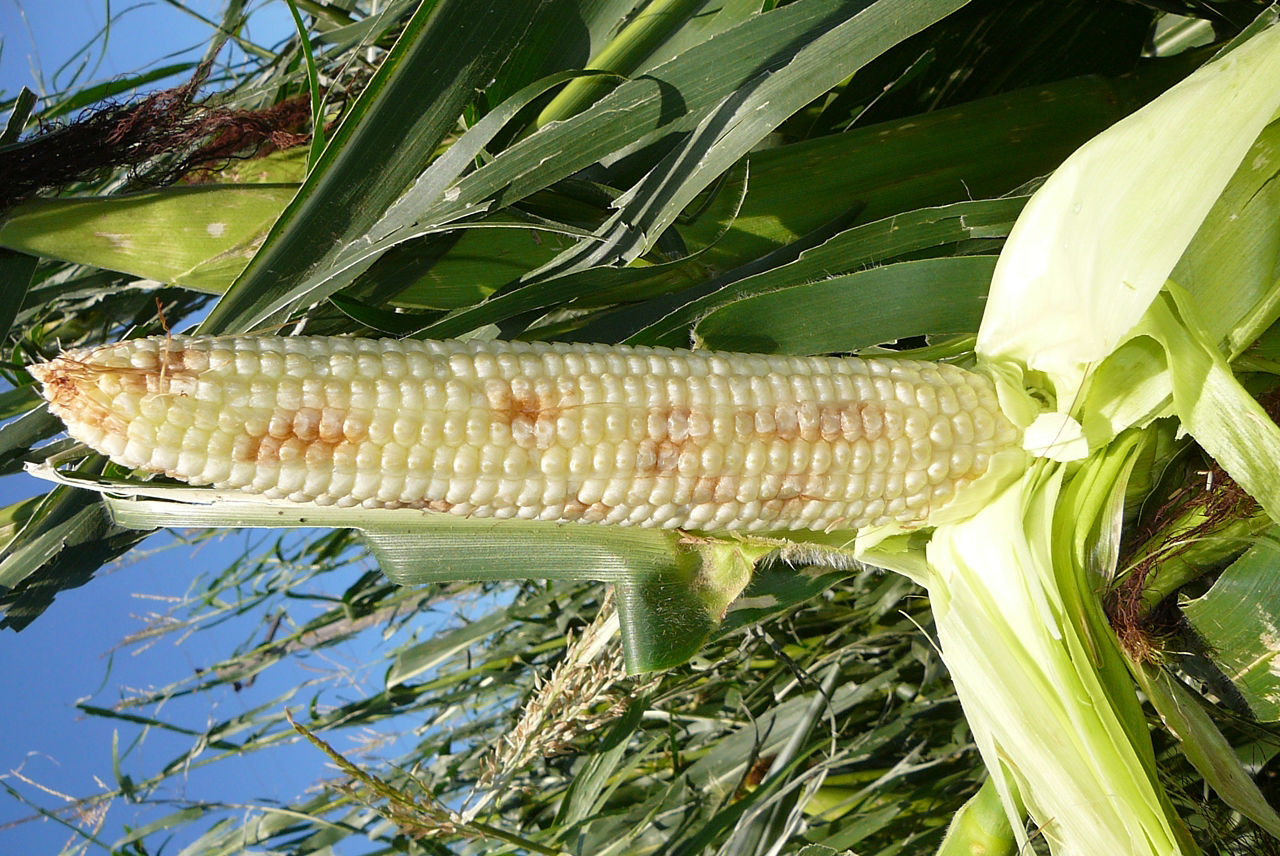
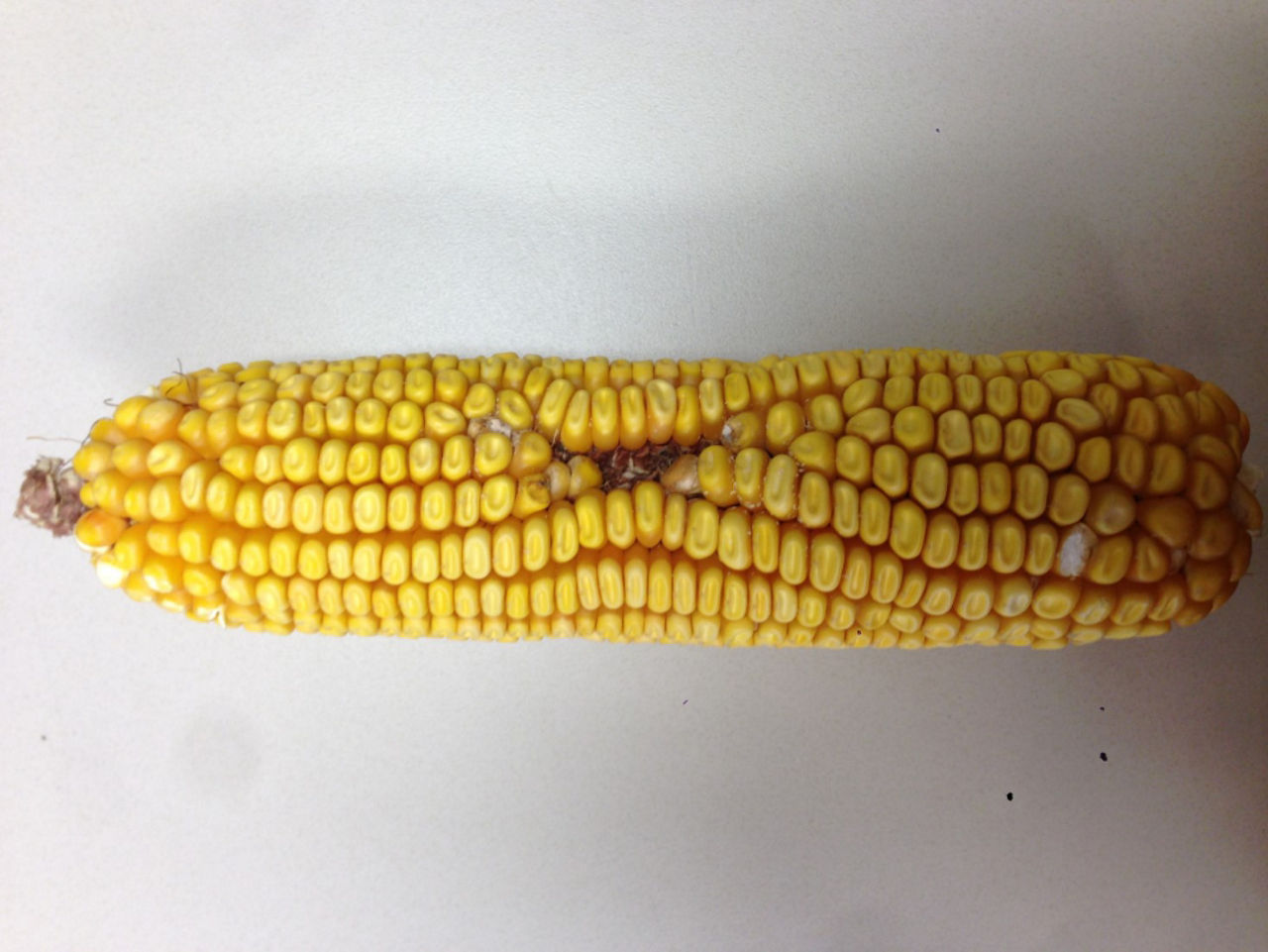
Fungicide Use
A fungicide, such as Delaro® 325 SC fungicide, applied proactively before a hail event may help reduce stress caused by foliar diseases. Wet, humid conditions common during and after a hail event are conducive for the development of many fungal corn diseases. Common foliar corn diseases such as gray leaf spot, northern corn leaf blight, and rusts do not infect through wounds and can be managed with a fungicide. Diseases such as Goss’s wilt, common smut, and stalk rots infect through wounds, and are not controlled by fungicides.5 An application may also be warranted should fungicide-controllable diseases become evident after the hail event and the estimated yield of the damaged crop economically supports the use of a labeled fungicide.6
To learn more about Delaro® fungicide, please visit https://www.cropscience.bayer.us/products/fungicides/delaro and contact your retailer. As with any crop protection product, always read and follow label directions, consider forecasted environmental conditions, corn growth stage, and disease presence before applying a fungicide.
Weeds
Reduced plant populations and defoliation can lead to increased light penetration and weed pressure. Depending on the growth stage of the corn crop it may be too late to apply herbicides for weed control.1 Yield estimations may need to be adjusted downward according to weed population size because of the nutrients and water used by the weeds.
Sources:
1 Klein, R.N. and Shapiro, C.A. 2011. Evaluating hail damage to corn. EC126. University of Nebraska – Lincoln. https://extensionpubs.unl.edu/publication/ec126/evaluating-hail-damage-to-corn.
2 United States Department of Agriculture, Federal Crop Insurance Corporation. 2023. Corn loss adjustment standards handbook, 2024 and succeeding crop years. FCIC-2580. Exhibit 15, Leaf Loss Chart. https://www.rma.usda.gov/sites/default/files/handbooks/2024-25080-Corn-Loss-Adjustment-Handbook.pdf.
3 Lauer, J. 2009. Late-season hail effects on corn. University of Wisconsin. Agronomy Advice. Field Crops 28.492-69. https://corn.agronomy.wisc.edu/AA/pdfs/A069.pdf.
4 Nielsen, R.L. 2012. Late-season hail damage to corn. Purdue University. Corny News Network Articles. https://www.agry.purdue.edu/ext/corn/news/timeless/HailDamageLateSeason.html.
5 Jackson-Ziems, T.A. 2014. Fungicide use in corn after hail or wind damage. CROPWATCH. University of Nebraska-Lincoln. https://cropwatch.unl.edu/fungicide-use-corn-after-hail-or-wind-damage/.
6 Sisson, A. Mueller, D., and Robertson, A. 2020. Fungicide use on hail damaged corn and soybean. Integrated Crop Management. Iowa State University Extension and Outreach. https://crops.extension.iastate.edu/post/fungicide-use-hail-damaged-corn-and-soybean.
Web sources verified 6/6/2025. 1222_136774